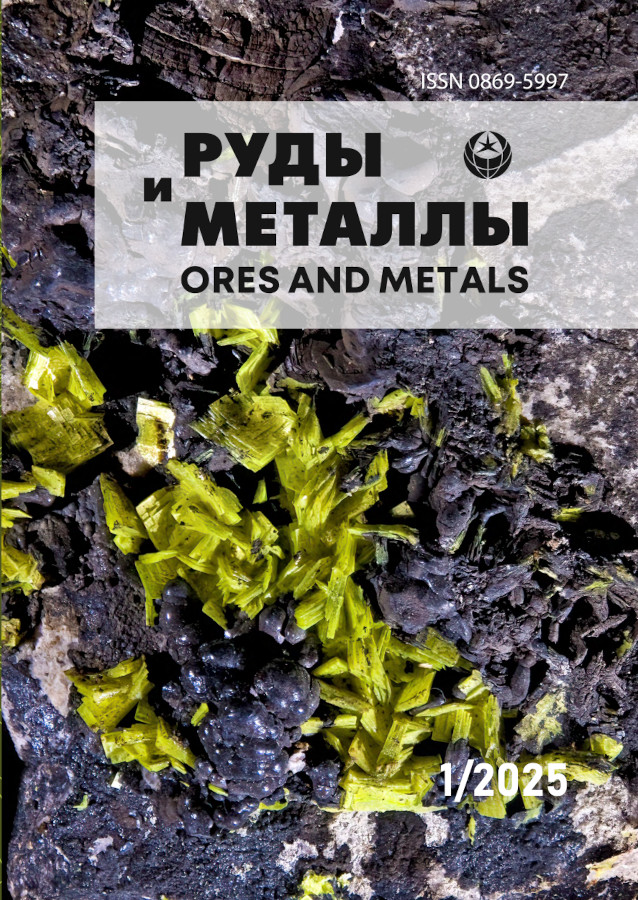The formation conditions and isotopic-geochronological characteristics of the Southern Ashaly gold deposit (Eastern Kazakhstan)
DOI: 10.47765/0869-5997-2025-10004
Keywords:
Eastern Kazakhstan, West Kalba gold-bearing belt, geological structural studies, fluid inclusions, S and C isotopic composition, U-Pb and Ar/Ar dating, structural-compositional model.Abstract
The geological structural studies substantiate four stages of formation and activation of the fault network of the Southern Ashali gold deposit. Homogenization of fluid inclusions in quartz of the goldlow-sulfide-quartz ores took place at 338…147 °C. The salinity of the fluids varied from 10,5 to 0,3 wt.% with the dominant presence of NaCl and KCl. The sulfur isotope composition of pyrite-I (δ34S = -7 ‰) corresponds to a sedimentary source, and that of pyrite-II and arsenopyrite-I corresponds to a deep-seated source. The U-Pb isotope age determinations (LA-ICP-MS) on zircons from the granitoids 309.1 ± 2.1 and 305.8 ± 2.2 Ma, respectively, and the age of gold-low-sulfide-quartz ores is 280 Ma (Ar/Ar technique). A structuralcompositional model of the ore deposit formation is proposed, that comprises six stages: I – sedimentation and early diagenesis; II – late diagenesis and/or metamorphism, associated with the gold-sulfide ores; III – effusive magmatism; IV – intrusive magmatism; V – hydrothermal-I, associated with gold-low-sulfide-quartz type ores; and VI – post-ore hydrothermal-II stage.


